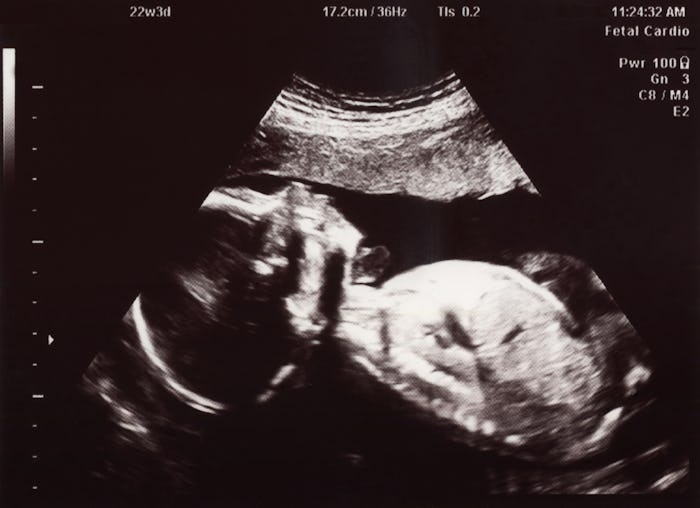Life
This Is How Babies Actually "Breathe" When They're In The Womb
When your baby is growing and developing, something about life inside the womb may give you pause, particularly about your baby's oxygen intake. For instance, how can babies breathe in amniotic fluid? The womb is a totally liquid environment, after all, and last you checked, humans don't have gills like fish. This may come as a surprise, but learning how to breathe in general takes a lot of time, development, and effort from the baby, and it's a fascinating process.
In a technical sense, though, babies do not really breathe in amniotic fluid. (Although it would be cool if your developing fetus were literally breathing under water, right?) A baby's first true breath occurs at birth when he initially begins to cry, according to the website for Dr. Sears. However, babies in the womb do practice the movements required for breathing, and they start going through the motions pretty soon. Consider it a sort of warm-up period. As early as week 10 or 11 of growth, developing fetuses will practice inhaling tiny portions of amniotic fluid, as noted by Healthline. At first the movements are more like swallowing, but as the baby nears his due date, the movements take on a more breath-like appearance. It is all a way to prepare those muscles and reflexes for that big initial breath.
So if babies in the womb are not technically breathing, then how do they get oxygen? Thank the all-important umbilical cord for this task. The baby gets all necessary oxygen and other life-supporting needs from the umbilical cord, according to the University of Rochester Medical Center. The umbilical cord is a baby's oxygen tank, food service, and general life support mechanism all in one. It's almost impossible to overstate the many ways the umbilical cord serves your baby up until the very moment of birth.
With that in mind, the way a baby transitions from the watery world of the womb into an independent breather is fascinating. As soon as a baby is delivered, his lungs are still filled with fluid, according to the U.S. National Library of Medicine. They are not even technically inflated yet. Seconds after delivery, the baby takes his first breath, and a number of systems kick into action. The remaining fluid in the lungs is drained or reabsorbed, and the lungs actually inflate and start working for the first time, as further noted by the U.S. National Library of Medicine. So much time and development goes into the creation of this everyday reflex.
Sometimes, complications occur when a baby must rely on his lungs to bring in oxygen for the first time. Hey, it is a big transition. If the switch from umbilical cord to lung use does not go smoothly, and the baby is born breech or with cord damage, then your baby may be at risk of hypoxia or hypoxemia, which, according to WebMD, is a condition in which the body does not receive enough oxygen and thus damages the brain, liver, and other vital organs. This sounds frightening, but it may simply mean your baby needs the use of oxygen therapy or a ventilator in the first few minutes of his life to get everything up and running. As always, of course, do not hesitate to discuss any specific concerns about your baby's breathing with a physician.
The act of breathing, which is so automatic and simple for most adults, is really a skill like any other that takes time to develop. When your baby takes his first breath and begins to cry, take a moment to appreciate the miracle. That first breath, the result of so much preparation and practice, does not come easy.
Check out Romper's new video series, Bearing The Motherload, where disagreeing parents from different sides of an issue sit down with a mediator and talk about how to support (and not judge) each other’s parenting perspectives. New episodes air Mondays on Facebook.
